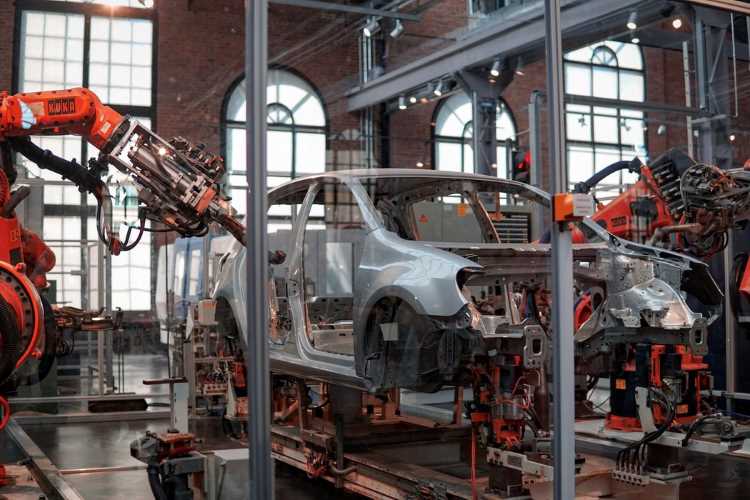
By Krishna Kumar Sinha
Budget 2021 is a special one as it was prepared in the backdrop of the Covid-19 pandemic and an economic crisis that saw the Indian economy contracting by 23.9%, and 7% in the first two quarters of the current financial year. According to NCAER, the economy may turn the corner with a 0.1% expansion in the third quarter, and 2% growth in the last three months of 2020-21.
The optimism surrounding a turnaround in the economic landscape does not originate from economic indicators, but from a decline in Covid-19 infections in the country and the development of vaccines in a record time. No doubt, the task before finance minister Nirmala Sitharaman was a challenging one and she raised the expectations by promising “a budget like never before”. Quite obviously, all Budget watchers were looking up to the North Block for a booster shot.
READ I Budget 2021: Some concerns about policy direction
Budget 2021: Challenges before the FM
At the beginning of the Budget 2021 speech, Sitharaman pointed out that a Union Budget followed a contraction in the economy only thrice in India’s history. The Indian economy was ravaged by the Covid-19 pandemic, resulting in a decline in revenue earnings and an increase in expenditure. The task before the finance minister was to take suitable measures to revive growth, a tough task considering the resource crunch she was facing. Everyone was sure that the health sector will get a boost in spending to fill the glaring gaps in health infrastructure exposed by the pandemic.
There were also expectations of additional allocation to the MSME sector, one of the drivers of the economy that employs close to 12 crore people. The sector suffered during the lockdown, resulting in huge job losses. Public spending on infrastructure development was also foreseen in Budget 2021 to provide a boost to demand recovery and employment generation. However, all these meant additional resources, not an easy task at a time when revenue collections are below par.
READ I Budget 2021: A bagful of surprises from finance minister
Personal income tax regime unchanged in Budget 2021
Budget 2021 was on the expected lines to an extent, except for some astonishment. For the middle class, there were no fresh taxes proposal, but the salaried employees were disappointed to see no change in tax slabs, a move that could have provided additional disposable income and a push in demand cycle. The FM, however, was not willing to forgo an assured part of revenue receipts at a time of reduced earnings.
The increased outlay on healthcare in Budget 2021 is a step in the right direction. But the allocation of Rs 2,23,846 crore for the health sector also includes Rs 96,000 crore for sanitation and drinking water, as well as the Covid-19 vaccination programme. Accordingly, the expenditure proposed for health infrastructure upgradation is only moderately higher than the previous year’s outlay.
READ I Budget 2021: Where finance minister’s words and deeds do not match
Budget 2021: No big push to healthcare sector
Health infrastructure in rural and urban areas is a necessity as people have to rush to metro cities for getting treatment. Apart from the absence of infrastructure for healthcare, there is also a lack of trained manpower to run wellness centres that plague the system. There is a need for a commensurate effort to build health professional capacity in the country.
The Budget 2021 outlay for centrally-run medical colleges and for the establishment of new medical colleges has increased only marginally Budget 2021. There is just one allopathic government doctor available for around 11,082 people in the country, while the recommended ratio is 1 for 1000 people.
The move to set up a national institution for One Health, a regional research platform for WHO southeast Asia Region, nine bio-safety level III laboratories, and four national institutes for virology is an insightful initiative from Budget 2021. India needs more institutions for basic research in to combat healthcare issues and achieve self-dependency in developing ingenious solutions.
READ I Budget 2021: The digital thrust will trigger inclusive growth, create jobs
Infrastructure focus of Budget 2021
Acknowledging the need for long-term debt financing for infrastructure needs, Budget 2021 announced the setting up a professionally managed development Financial Institution (DFI) to act as a provider, enabler, and catalyst for infrastructure financing. The necessity of a DFI has arisen as most public-sector banks are struggling to tackle their toxic assets, limiting their ability to fund large infrastructure projects. Accordingly, a Bill to set up a DFI will be introduced.
The Budget 2021 proposal for the setting up a DFI is the second such initiative since Narendra Modi took over as the prime minister in 2014. In 2015, a National Investment and Infrastructure Fund (NIIF) was created as an alternative investment fund to provide long-tenor capital for infrastructure projects. However, even after five years of its existence, NIIF is yet to emerge into a competent financing vehicle to meet the government’s investment plans under the National Infrastructure Pipeline (NIP). Let’s hope that the authorities learn from the NIIF experience.
An individual’s health reflects on his social and economic outcomes, and so is the impact of good infrastructure on the national economy. However, the impact of investment in infrastructure and healthcare is to be assessed in the long run. The expenditure on health and infrastructure will take a long time to show results, though such government spending will also give a boost to the demand and supply sides in the foreseeable future.
READ I Budget 2021: A promising start to reboot Indian economy
No push to MSME sector in Budget 2021
India’s industrial sector was badly hit by the Covid-19 pandemic and the national lockdown. The biggest sufferer was the unorganized sector comprising MSME units. The government had in May 2020 announced measures to boost liquidity in MSMEs which included collateral-free loans, the release of pending payments to MSMEs from PSUs, and infusion of equity through a proposed fund of funds.
In Budget 2021, the finance minister has proposed measures such as an increase in customs duty on products manufactured by MSMEs in India, and a reduction in duty on import of steel scrap, recyclable copper scrap, and primary steel products to give them relief in terms of input cost. The steps announced will reduce the burden on engineering products manufacturers from a sharp increase in steel prices in the last six months.
Making Indian MSME units globally competitive in terms of scale and quality of products would require larger government intervention such as incentivising technology up-gradation, creation of state-of-the-art testing facilities in clusters, and up-gradation of infrastructure support for export consignments of MSME units, under a comprehensive plan for making India a key link in global value chains.
READ I Budget 2021: Good starts for rural sector, but need a better effort
Nothing to manufacturing outside PLI
Budget 2021 has no novel proposal for the manufacturing sector, though it was admitted by the finance minister that the sector has to grow in double digits on a sustained basis to become an integral part of global supply chains. The government looks confident that the recently announced PLI scheme has the potential to create global manufacturing champions for an AtmaNirbhar Bharat. However, as of now, the PLI scheme covers specified products in 13 manufacturing sectors, hence cannot be called a comprehensive scheme covering the entire manufacturing sector.
While it may be too early to evaluate the effectiveness of the PLI scheme, one important sector missing in the PLI scheme is the capital goods sector. Local manufacturers of capital goods are placed at a disadvantage due to cost factors beyond their control like raw materials cost and financing cost. Further, for SME units in this sector, financial assistance alone is not enough for achieving global competitiveness. Other support services such as skill up-gradation training, marketing assistance, infrastructure support, etc are equally vital for their growth.
Manufacturing units cannot achieve much from in-house research. What is needed is a collaboration with academia for the development of solutions for production-related problems like automation, improved design, wastage reduction, and productivity. A good initiative in the direction was taken in Budget 2019 with the announcement to establish a National Research Foundation (NRF) on the lines suggested in New Education Policy (NEP).
Budget 2021 has earmarked Rs 50,000 crore over five years for the creation of NRF to fund research across a range of disciplines, from science and technology to humanities with a focus on identified national priority thrust areas.
READ I Budget 2021 has the intent, but lacks funds for quality education
It is hoped that the NRF will be able to create a platform to facilitate alignment of the research in universities with the need of the manufacturing industry through an efficient mechanism. Though a noble move, it will take years to see the results of the scheme.
Budget 2021: Automobile sector gets a booster shot
With a share of 7% of India’s GDP, 4.3% in of annual exports, and 35 million jobs, the automobile sector has a major impact on the well being of a large section of the population. The sector was brought to a grinding halt during the Covid-induced 40-day lockdown. To revive the sector from the adverse impact of the lockdown, Budget 2021 was expected to push for higher consumer spending. However, with no change in the income tax slabs, the middle class is deprived of any extra disposable income.
The industry was also expecting a cut in GST rate to 18% from the existing 28% to reduce vehicle’s on-road cost to boost sales. However, the government has proposed another route, the scrappage policy, which will require a fitness test after 15 and 20 years for commercial and personal vehicles respectively.
Though the details of the policy shall be separately announced, it would be desirable if the vehicle owners are provided with incentives in terms of a waiver of road tax, or reduced GST rates if a new vehicle is purchased within a specified period. Further, in Delhi, registration of private vehicles older than 15 years is already not permitted. This rule may be extended across the country with no scope of fitness criteria.
READ I Budget 2021: The digital thrust will trigger inclusive growth, create jobs
Hike in FDI limit Budget 2021 boon to insurance sector
Budget 2021 has proposed to amend the Insurance Act, 1938 to increase the permissible FDI limit from 49% to 74% in insurance companies and allow foreign ownership and control with safeguards. Under the new structure proposed, the majority of directors on the board and key management persons would be resident Indians, with at least 50% of directors being independent directors.
Under the current policy, the ownership and control of an insurance company shall remain in the hands of Indian entities. The proposal is in line with the ongoing reforms to open up various sectors to attract foreign investment. However, it would be prudent to assess the impact of the policy change before notifying the details.
Budget 2021 proposals presented by finance minister Nirmala Sitharaman is a part of an ongoing effort to tide over the crisis caused by the pandemic and follow a proven middle path towards economic recovery.
(Krishna Kumar Sinha is an industrial policy and FDI expert based in New Delhi. His last assignment was as an industrial adviser in the department of industrial policy and promotion, DIPP, currently known as DPIIT, under the ministry of commerce and industry of the government of India.)
Krishna Kumar Sinha is an industrial policy and FDI expert based in New Delhi. His last assignment was as an industrial adviser in the department of industrial policy and promotion, DIPP, currently known as DPIIT, under the ministry of commerce and industry of the government of India.

